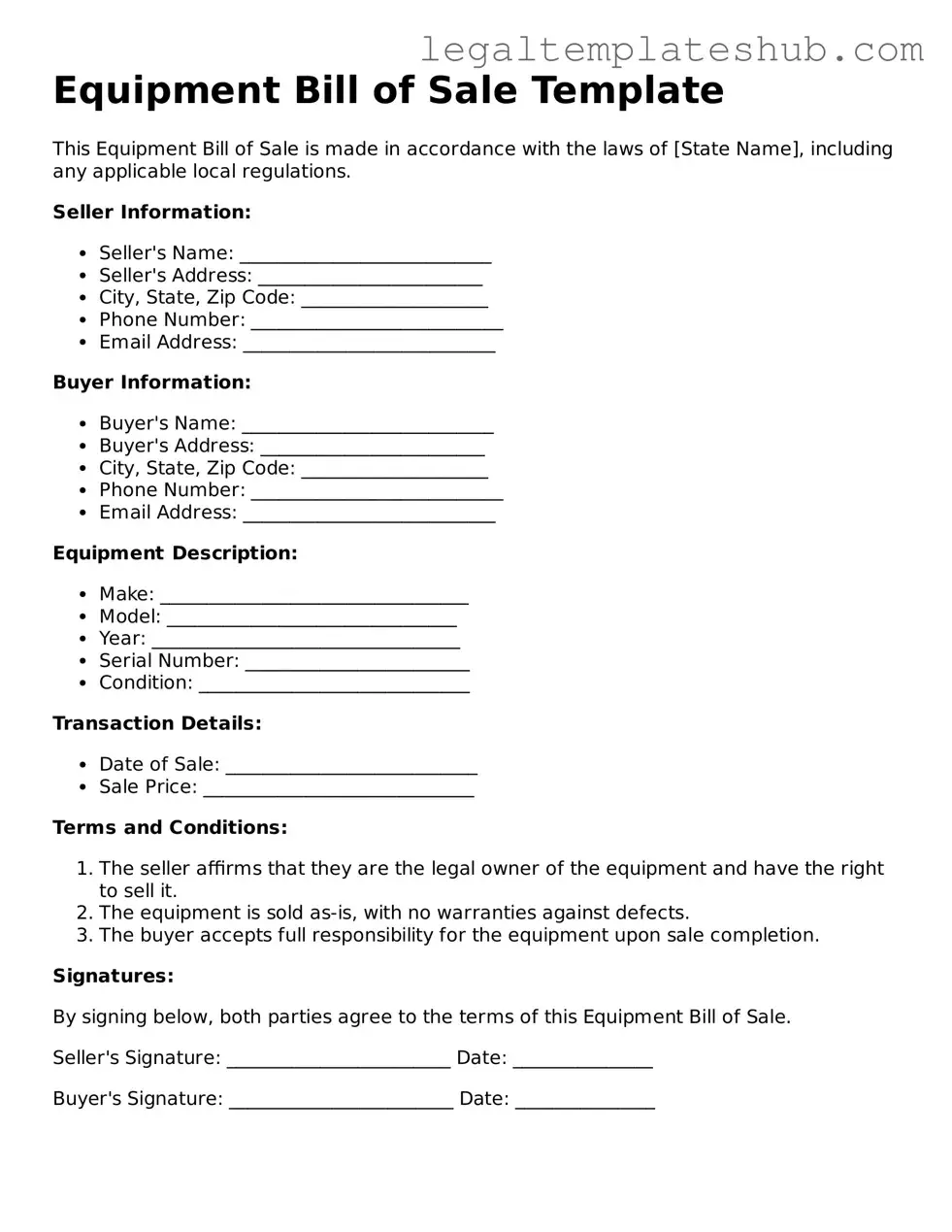Instructions on Filling in Equipment Bill of Sale
After you have gathered all the necessary information, it’s time to fill out the Equipment Bill of Sale form. This form is essential for documenting the sale of equipment, ensuring both the buyer and seller have a clear record of the transaction.
- Start with the date: Write the date of the transaction at the top of the form.
- Seller information: Fill in the seller's full name, address, and contact information.
- Buyer information: Enter the buyer's full name, address, and contact information.
- Description of the equipment: Clearly describe the equipment being sold. Include details such as make, model, serial number, and condition.
- Sale price: Specify the total sale price of the equipment.
- Payment method: Indicate how the payment will be made (e.g., cash, check, bank transfer).
- Signatures: Both the seller and buyer must sign and date the form to validate the transaction.
Once the form is completed, ensure that both parties retain a copy for their records. This documentation can be important for future reference or in case of any disputes.
